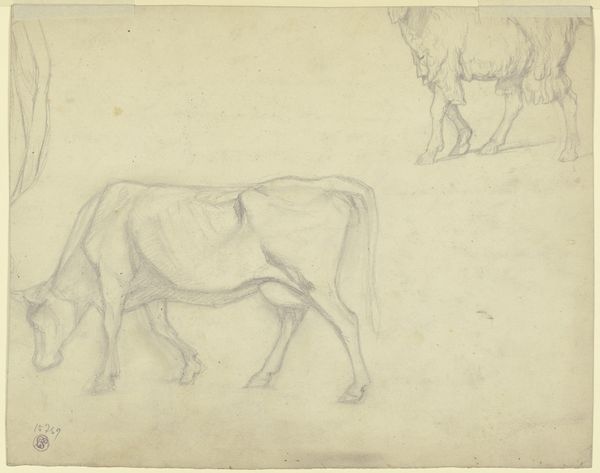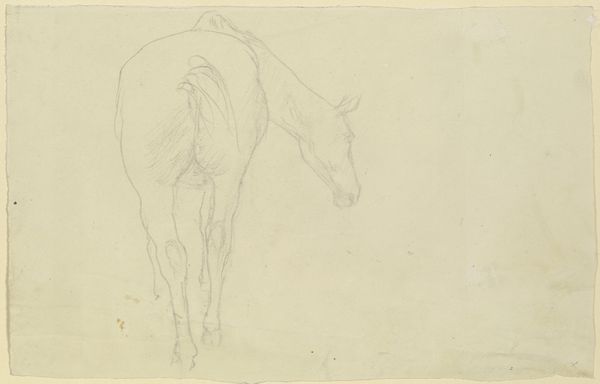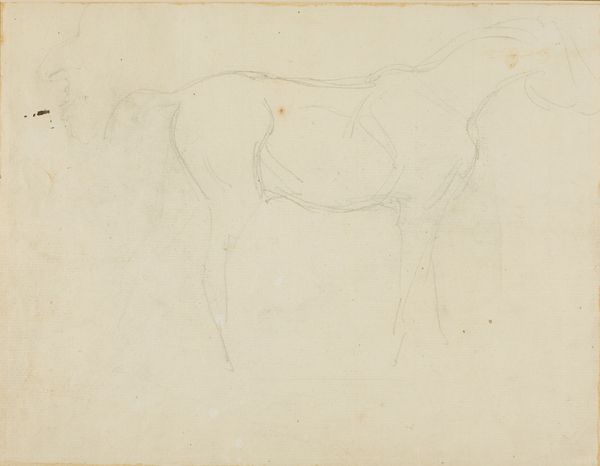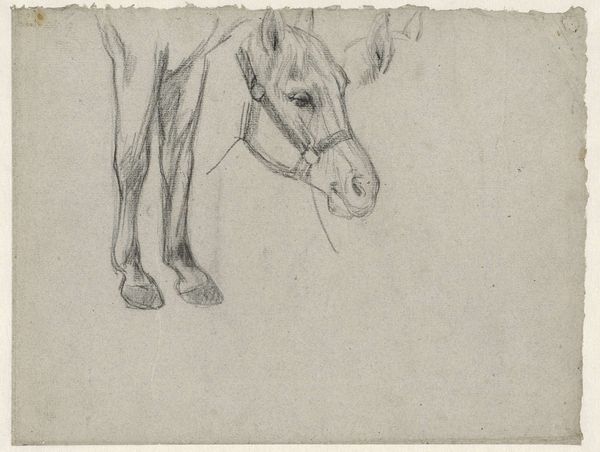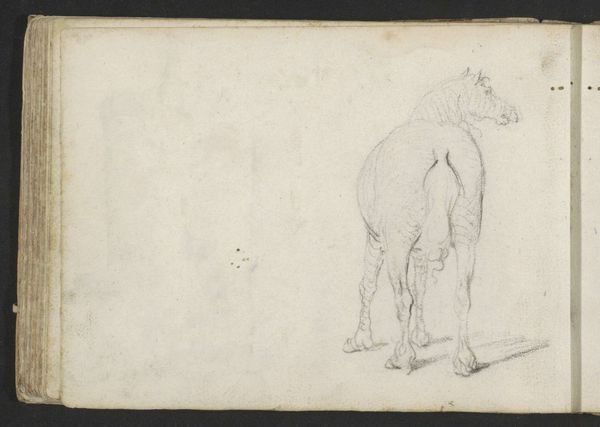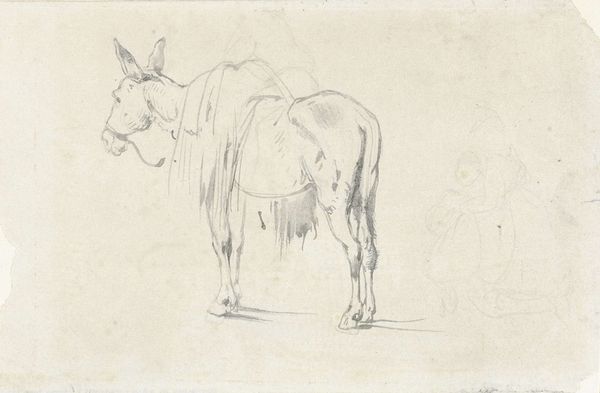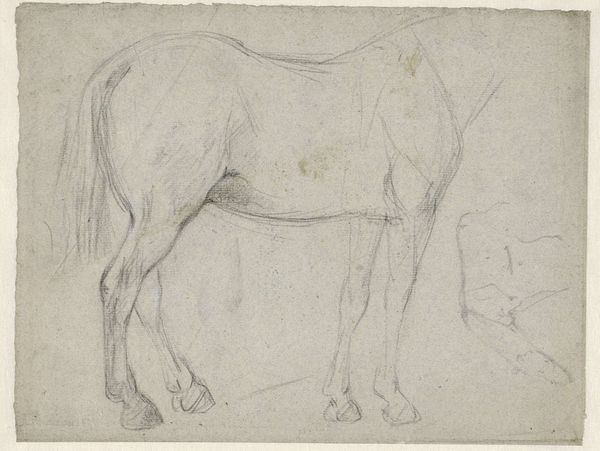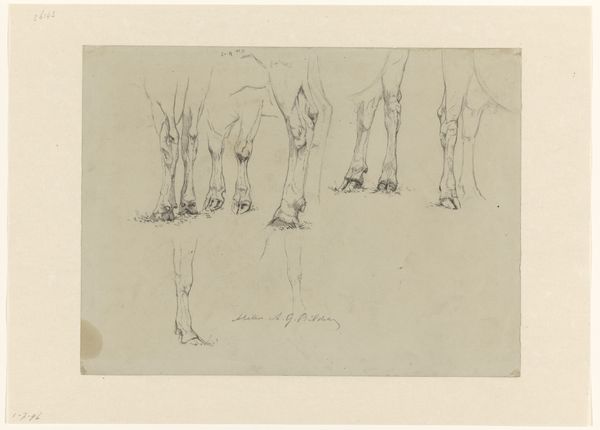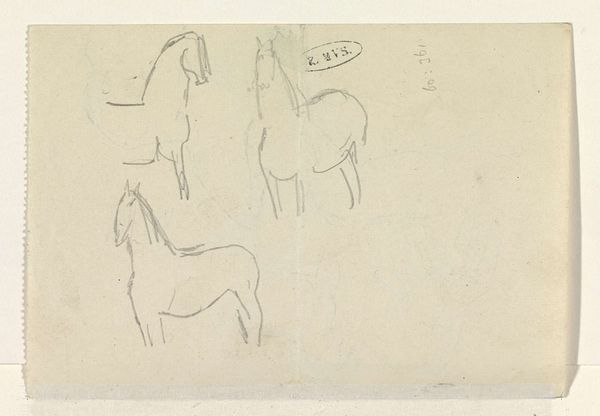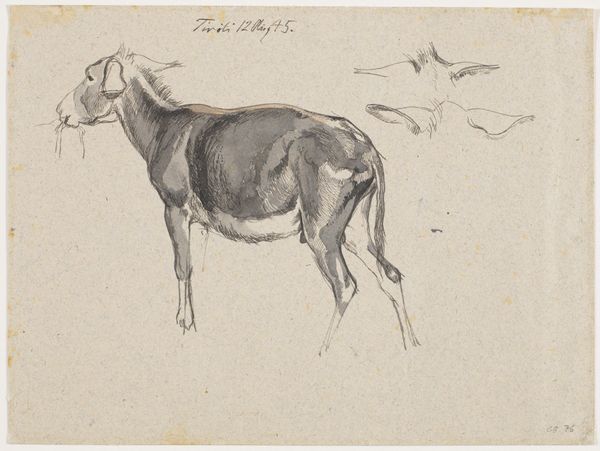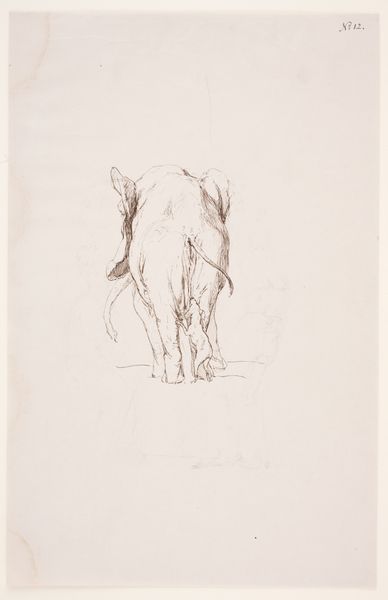
drawing, paper, pencil
#
drawing
#
landscape
#
figuration
#
paper
#
pencil
#
line
#
academic-art
#
realism
Copyright: Public Domain
Curator: Welcome. Today, we’re looking at Otto Scholderer's drawing "Hinterläufe eines Esels," created in 1878. The title translates to "Hindquarters of a Donkey" or perhaps more literally, "Underpinnings of a Donkey." It’s rendered in pencil on paper and currently resides here at the Städel Museum. Editor: "Underpinnings!" I love that! The drawing is cropped so close, almost comically intimate, like a backstage pass to an equine reality. You only get the back legs and part of the body—sort of makes you consider the hidden labor in even the simplest things, like a donkey stroll. Curator: Exactly. Scholderer was deeply involved in the realism movement. Works such as this drawing represent a rejection of romantic idealism. We often analyze these academic studies as evidence of changing values during the second half of the 19th century and their public reception within increasingly important museum and gallery settings. Editor: Changing values... that rings true here. The composition feels fragmented, almost humble. I sense a delicate balance. The details in the legs, so carefully observed, against the implied bulk and hidden presence. It makes you wonder, what does the donkey represent here beyond just…donkey-ness? Curator: Well, donkeys were commonly used as beasts of burden, especially by the working classes. They symbolized humility and endurance in labor. I suppose the artist is focusing attention, by way of isolating them from the whole animal, on the labor these particular appendages performed. Editor: Hmm. Or maybe the artist saw some secret grace, some understated elegance in those hooves and gams, that others might have missed? Like finding beauty in the everyday. The more I look, the more they resemble tree trunks rooted into sand...or tiny awkward ballerinas standing at attention. Curator: Fascinating how artistic representations can transcend mere documentation. Thanks for lending me that new, albeit idiosyncratic perspective, to an often overlooked animal detail and its significance in everyday life. Editor: Thank you. Perhaps what we’re left with, finally, is a meditation on overlooked details... and the surprising beauty they hold.
Comments
No comments
Be the first to comment and join the conversation on the ultimate creative platform.
